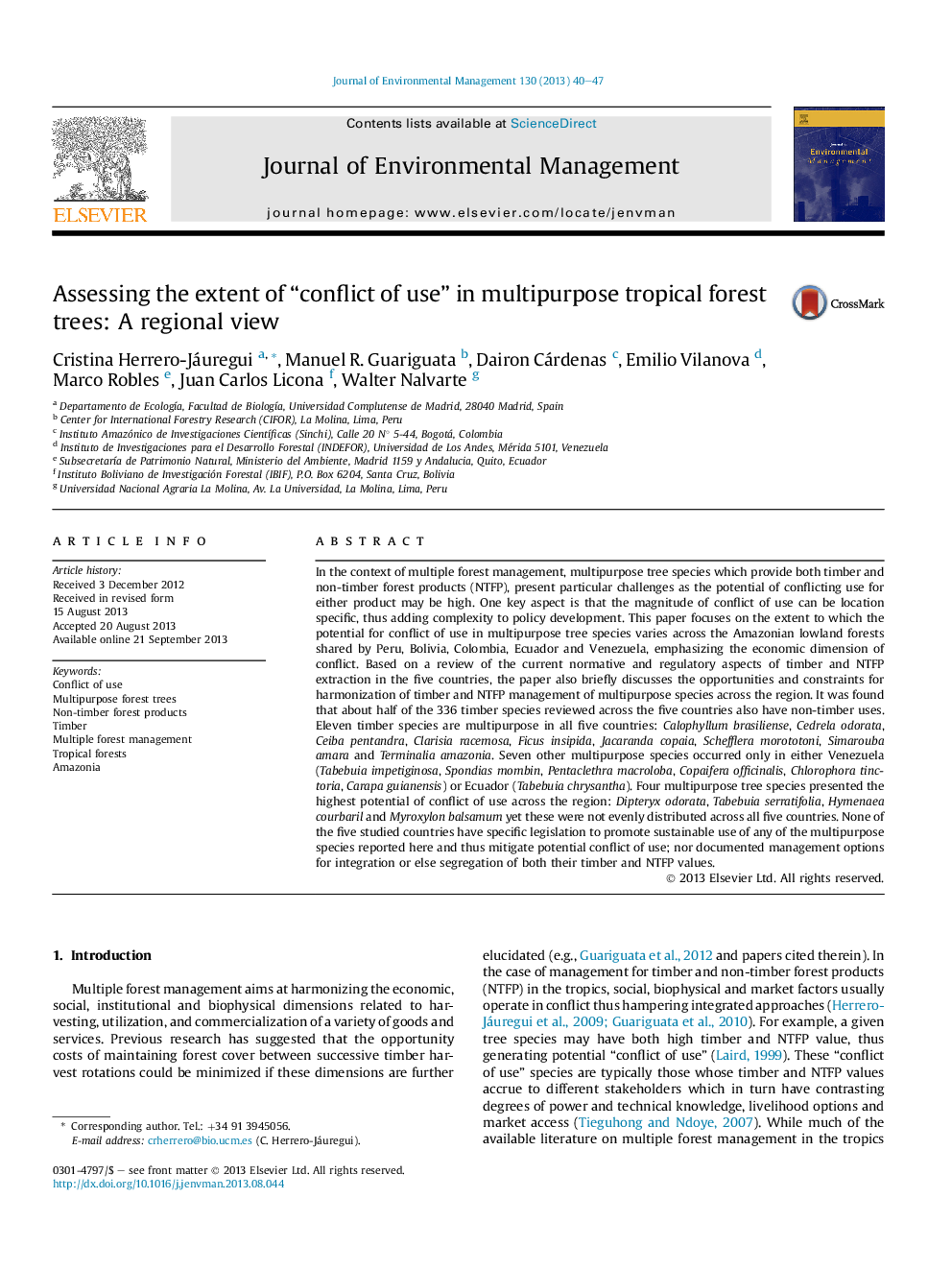| کد مقاله | کد نشریه | سال انتشار | مقاله انگلیسی | نسخه تمام متن |
|---|---|---|---|---|
| 1056069 | 1485282 | 2013 | 8 صفحه PDF | دانلود رایگان |

• What is the extent of conflict of use of multipurpose species across the Amazon?
• We offer a regional vs. national review of the extent of conflict of use.
• Half of the timber species listed across the five countries have a non-timber use.
• Four multipurpose species present both high timber and no timber economic value.
• There is no legal protection for any of the four species in any of the countries.
In the context of multiple forest management, multipurpose tree species which provide both timber and non-timber forest products (NTFP), present particular challenges as the potential of conflicting use for either product may be high. One key aspect is that the magnitude of conflict of use can be location specific, thus adding complexity to policy development. This paper focuses on the extent to which the potential for conflict of use in multipurpose tree species varies across the Amazonian lowland forests shared by Peru, Bolivia, Colombia, Ecuador and Venezuela, emphasizing the economic dimension of conflict. Based on a review of the current normative and regulatory aspects of timber and NTFP extraction in the five countries, the paper also briefly discusses the opportunities and constraints for harmonization of timber and NTFP management of multipurpose species across the region. It was found that about half of the 336 timber species reviewed across the five countries also have non-timber uses. Eleven timber species are multipurpose in all five countries: Calophyllum brasiliense, Cedrela odorata, Ceiba pentandra, Clarisia racemosa, Ficus insipida, Jacaranda copaia, Schefflera morototoni, Simarouba amara and Terminalia amazonia. Seven other multipurpose species occurred only in either Venezuela (Tabebuia impetiginosa, Spondias mombin, Pentaclethra macroloba, Copaifera officinalis, Chlorophora tinctoria, Carapa guianensis) or Ecuador (Tabebuia chrysantha). Four multipurpose tree species presented the highest potential of conflict of use across the region: Dipteryx odorata, Tabebuia serratifolia, Hymenaea courbaril and Myroxylon balsamum yet these were not evenly distributed across all five countries. None of the five studied countries have specific legislation to promote sustainable use of any of the multipurpose species reported here and thus mitigate potential conflict of use; nor documented management options for integration or else segregation of both their timber and NTFP values.
Journal: Journal of Environmental Management - Volume 130, 30 November 2013, Pages 40–47